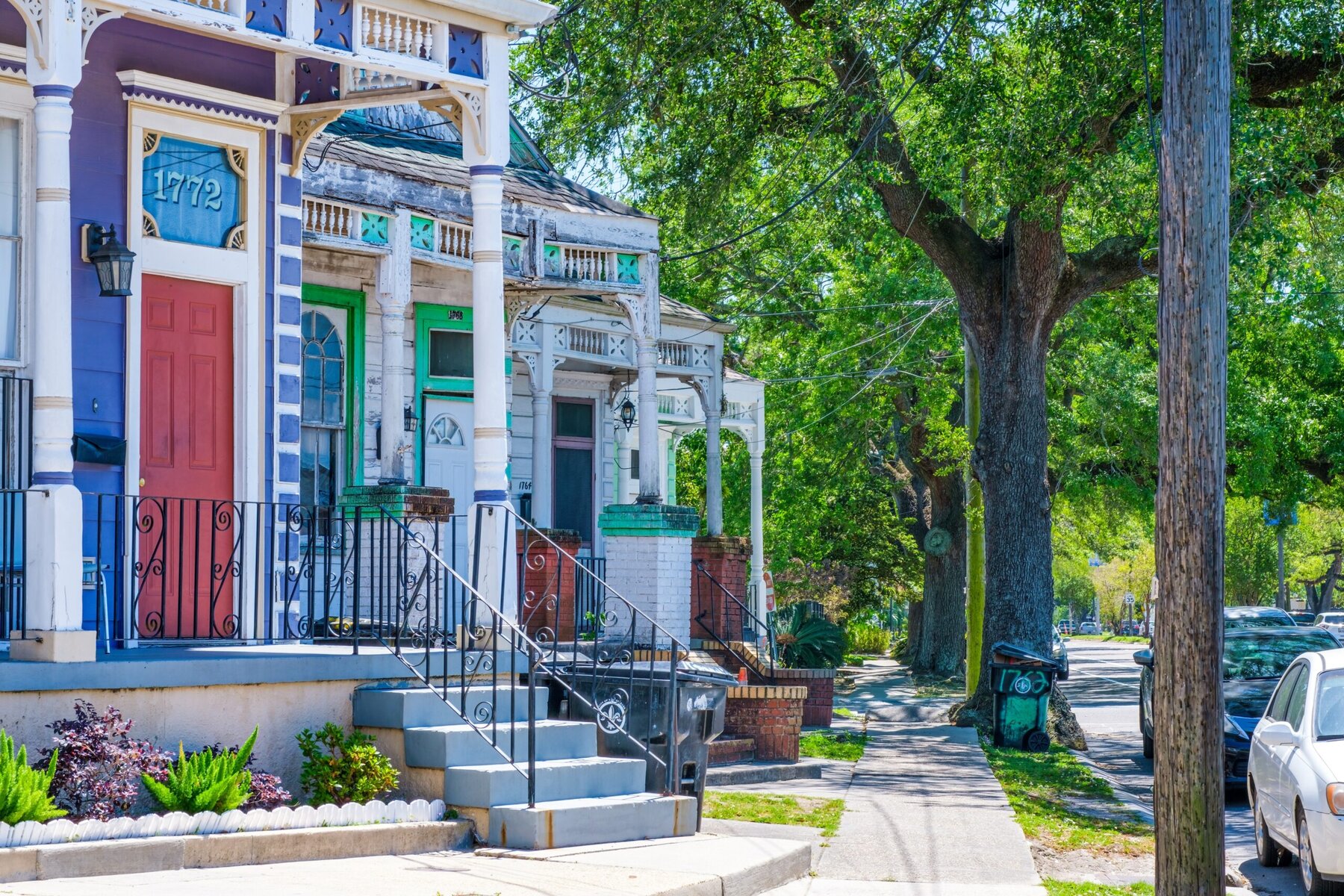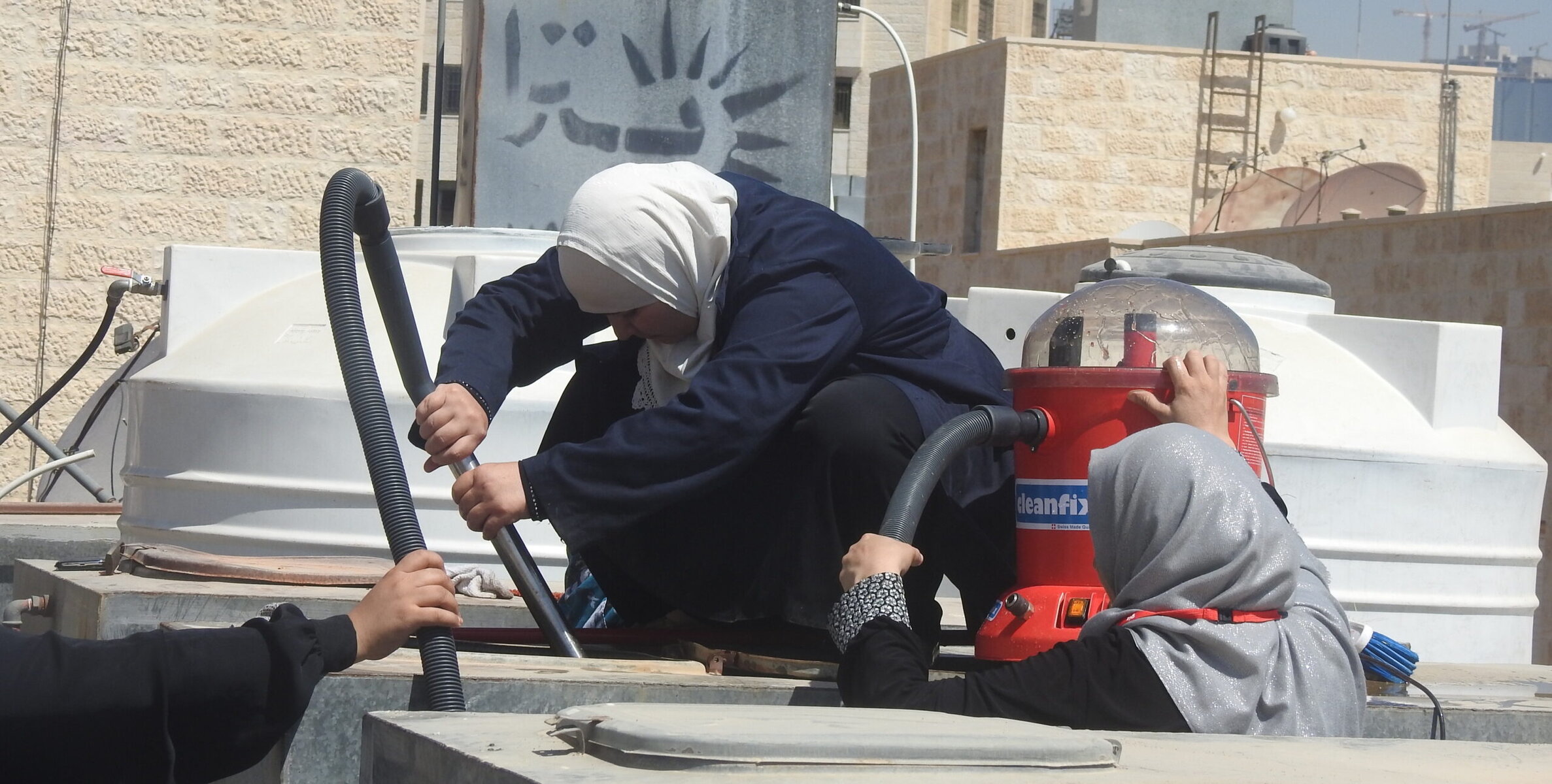As U.S. coronavirus infections rolled past 30,000 this weekend, approximately one in four Americans is under some kind of order not to leave home. But as Ruth Ann Norton knows, which home they’re confined to makes a world of difference.
“Housing is such an integral part of health in this country,” says Norton, president and CEO of the Green & Healthy Homes Initiative, a non-profit that advocates for healthier housing measures like lead removal and clean air. For example, families that have lead removed are “less likely to have respiratory exacerbations,” which Norton says will likely have an impact in this pandemic, since coronavirus is a respiratory illness. “We did not think about or know about or anticipate the coronavirus, but what we know is that when people are better equipped, they’re less likely to be poisoned by lead, and be safer from injury.”
From eviction moratoriums to hastily reconfigured homeless shelters, the coronavirus is making one thing abundantly clear: the connection between health and housing runs deep. A Robert Woods Johnson Foundation report “found that low-income people with difficulty paying rent, mortgage or utility bills were less likely to have a usual source of medical care… [and] children in areas with higher rates of unaffordable housing tended to have worse health.”
These links have become so apparent that some hospital systems have started spending their money not just on health care facilities and staff, but on housing for the communities they serve. These interventions have taken on new urgency amid the worst public health crisis in a century as people’s homes have become, quite literally, bulwarks against a dangerous disease.
The neighborhood is a patient
Dr. Kelly Kelleher is vice president for community health at Nationwide Children’s Hospital, a pediatric teaching hospital with a staff of nearly 12,000 in Columbus, Ohio. In 2009, the hospital launched the Healthy Neighborhoods Healthy Families (HNHF) program to partner with residents of the city’s south side in making their neighborhood a healthier place to live. It began as a collaborative effort between the hospital, the mayor’s office, the faith-based Community Development for All People and the United Way. Effectively, the goal was to look at the neighborhood as a patient.
“Children are largely affected by the residence they live in, especially early in their life,” says Kelleher.
On the south side of Columbus, says Kelleher, 30 percent of homes were vacant when the program was launched — the highest share in the city, which explains why residents, when asked about their biggest health concerns, ranked safe housing at the top of the list.
With the hospital providing the financing, the HNHF coalition established a four-prong approach to using housing to improve health outcomes. The first prong is home repair for people at risk, like fixing widows and lighting. The second prong can include a full gut rehab to provide stable housing, the third is a low-income housing tax credit, and the fourth is creation and maintenance of single-family rentals for low-income workers.
“That combination of programs, with the goal of creating a mixed-income, stable community, bringing together diversity, provides the healthiest neighborhood possible,” says Kelleher.
Over the past 10 years, Kelleher says, the hospital has invested $10 million and leveraged about $80 million more, acting as a guarantor in deals that it thinks will benefit the neighborhood. In April, HNHF will publish the initiative’s health outcomes in the journal Pediatrics. Though Kelleher couldn’t provide that data before it’s published, a report in Pediatrics from September 2018 found that the investments “have dramatically transformed the housing stock in the area and reduced blight” and “altered the vacancy rate… from greater than 25 percent to below the community average of six percent.”
The majority of HNHF housing has been built in the last five years, and in that time, Kelleher says that both the neighborhood environment and health have improved. There has been more market-rate investment, a reduction in crime and an increase in jobs and high school graduation rates. And, to the hospital’s point, the number of emergency room visits by children has gone down, as has the rate of child in-patient hospital stays.
There’s still a lot of runway left, however. “We’re still 50,000 houses short for the community,” says Kelleher, noting the explosive growth Columbus anticipates in the coming years.
Other cities have followed suit. Boston Medical Center made a $6.5 million “community improvement” investment in 2017 as part of its larger plan to expand. BMC is investing in various projects, including funds for affordable, equitable housing as well as funding for community health workers to work directly in Boston’s housing developments, says Dr. Megan Sandel, one of the leaders of BMC’s housing initiative.
According to Sandel, just 10 to 20 percent of health is determined by the type of health care received. The social determinants of health, such as where you live and your environment, are likely to have a much greater impact.
BMC’s investments don’t go to site-specific housing directly — instead, they support organizations that work on housing and homelessness, including Boston Housing Authority. “Early evidence shows, by helping medically complex patients who were homeless, we’re seeing improvement in both their mental and physical health,” says Sandel.
The project is still quite new, and data has not been published yet, but the early evidence is positive. Sandel is looking forward to more conclusive results in years to come.
A race against recession
“We believe that [HNHF] will buffer that neighborhood” from the economic fallout caused by the coronavirus — “as long as we can maintain it,” Kelleher says of Columbus’s south side. “What I’m not clear about is what will happen to the system overall. If children are hospitalized at a much greater rate, it could overwhelm our system and we’ll have a negative year, financially, with insurance companies paying a lot more.”
If that happens, Kelleher worries that the hospital will be compelled to refocus its diminished resources away from housing and back onto sick care.
“The health effects of the economy are far more profound on kids and their families than maybe even the virus,” he says. “If we don’t figure this out, we’re going to spend the next 20 years making up lost ground, on a whole generation of children. Do we retreat? Or think about these programs intentionally and address where they are most needed?”
It’s ironic that the coronavirus threatens to derail an initiative specifically aimed at improving the spaces where people are currently quarantined to avoid that very pandemic. Still, if the funding can outlast the current crisis, the idea may continue to catch on. Boston Children’s Hospital is following BMC’s lead, and has set aside $5 million for housing. In a report, WBUR noted that Massachusetts “spends about 40 percent of its money on health care, and one percent on housing. If health care leaders start speaking out about the need for more and better housing… that could help change the ratio in the long term.”









